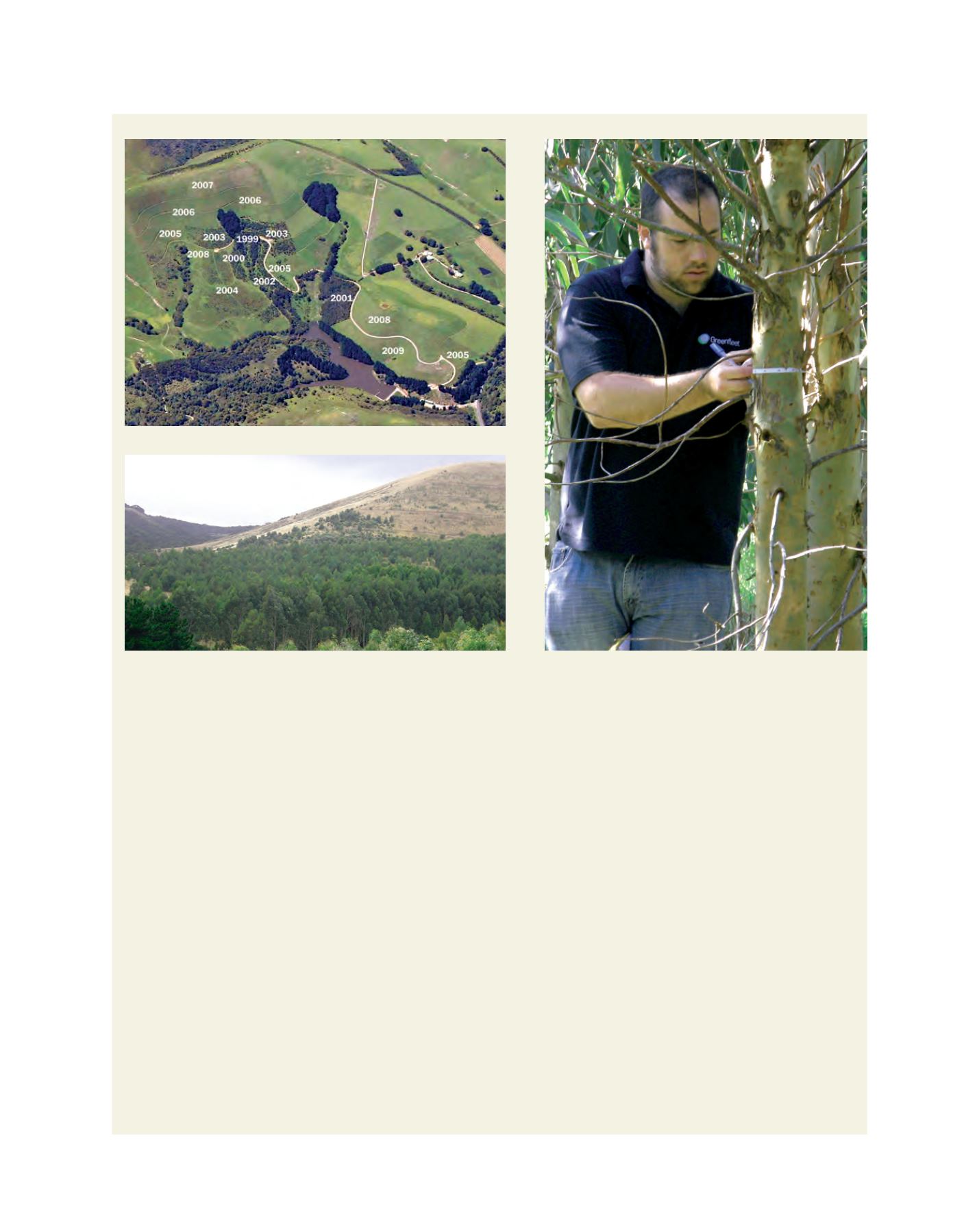

[
] 82
The Battery Creek project, Victoria, Australia
Over 11 years Greenfleet progressively planted 45 hectares of native forest at
Battery Creek, a water catchment area for South Gippsland Water
2
, in the south-
east of Victoria, Australia. The catchment supplies drinking water to the South
Gippsland town of Fish Creek and surrounding areas.
Prior to its acquisition by the water authority in the mid-1980s, the Battery
Creek site, like much of the local area, had been used for grazing following clear-
felling of the area in the early 20th century.
In addition to its carbon sequestration function, this project helps to improve
land stability, water quality and biodiversity in the water catchment area.
The Superb Lyrebird (Menura novaehollandiae) is known to live in surrounding
areas, so the Battery Creek revegetation project is also playing a part in
reconnecting the fragmented habitat of this iconic Australian fauna species.
While the Battery Creek planting site is one large site, the variety of plant
species changes from one area to another, as the terrain varies from wet gullies
through gentle slopes to steep hillsides.
Each year species were selected based on local remnant vegetation and the
best available information of species present prior to land clearing.
Progress
The Battery Creek project demonstrates the progress of Greenfleet’s forests
over time, with each year’s growth showing an increase in height and trunk
diameter. Trees planted in 2008-2009 are still saplings, however those planted
in 2000 are now well over 10 metres tall, many 15-20 metres, and have
established dense canopy coverage.
In some of the more mature planting areas it is hard to tell that the Battery
Creek site is not a naturally occurring forest.
The Greenfleet team conducted a biodiversity study at the Battery Creek site
in 2010 to gain an understanding of species regeneration and habitation on the
site. The project included two days of general surveying and one night of specific
fauna spotlight surveying. Five survey areas were selected ranging from juvenile
forest with an open canopy (planted in 2008), through to mature forest with full
canopy closure (planted in 1999).
Image: Greenfleet Australia
Overall 42 flora and 48 fauna species were observed during
the biodiversity surveys. There were direct sightings and evidence
of kangaroos, wallabies and wombats throughout the site. Many
birds also inhabit the area and it is hoped that in future the elusive
Lyrebird will be seen.
A rich, biodiverse native forest has grown which is helping
to improve water quality in the Battery Creek Catchment area.
Species include a variety of
eucalypts
, wattles and tea trees
native to the area. In addition, the hills have been stabilized
and the forest is providing shelter for wildlife and capturing
greenhouse gas emissions.
Carbon measurements
Greenfleet measured carbon yields across some of the earlier
plantings at the Battery Creek site in 2010.
Seven individual areas were assessed, with a total area of 26
hectares – meaning more than half the site was sampled. The
results showed impressive stores of carbon, with yields at least
300 per cent of the modelled carbon for native forests of the
same age in the same location
3
, while the oldest site showed
carbon yields ten times the modelled values.
One of the impressive stories the Greenfleet foresters brought
back to the office, was that their two-metre tape was too short to
reach around the trunk of some of the trees planted in 1999.
An independent measurement of a five-year-old site at Battery
Creek in 2009 also showed carbon yields greater than 300 per
cent of the NCAT models.
What this means is that the Greenfleet forest at Battery Creek
is growing at least three times faster than the models predict and
while doing its job to recapture carbon, the forest is also rapidly
restoring habitat for native wildlife, filtering runoff into the water
supply reservoir and stabilizing the steep hills to reduce erosion.
Aerial photo of the Battery Creek site identifying the revegetation zones by year (2007)
2004 planting site, looking up the hill (January 2010)
Greenfleet forester measuring the diameter of a five-year-old tree
















